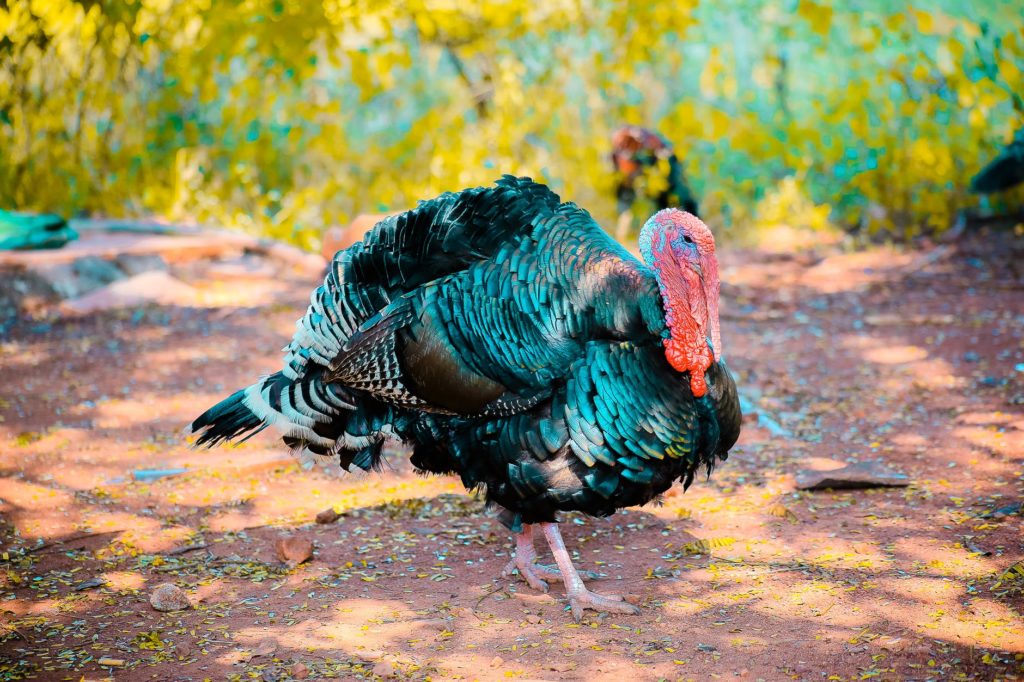Thanksgiving is the all-American tradition of gathering with our loved ones to enjoy an extravagant meal. The star of the show is the roasted turkey, a delectable treat we typically only enjoy during this part of the year. Considering that most households in the U.S. are eating turkey for their main course on Thanksgiving, that means extremely high demand for our unlucky poultry friend.
How Many Turkeys are Killed for Thanksgiving?
The dark side of Thanksgiving: the turkey death toll. Each year, as many as 46 million turkeys are consumed to celebrate this family. If you want to include turkeys that will be consumed around Christmas time as well, then we can easily raise that number beyond 50 million for the holiday season.
It’s difficult to calculate the number of turkeys killed for Thanksgiving alone, simply because they are produced at a consistent rate throughout the year. Not to mention, turkey is still consumed year-round, with an obvious peak around Thanksgiving and Christmas. We also can’t forget about the classic giant turkey leg available at your nearest renaissance fair.
Every year, an average of 240 million turkeys in the U.S. are farm bred and killed for consumption. Thanksgiving alone calls for almost 20% of that statistic. Most turkeys purchased during the holidays were killed earlier that year and stored in a freezer for preservation. The sedating poultry is primarily raised in Arkansas, Minnesota, and North Carolina.
With the rate turkeys are being produced, it is unlikely that turkeys will become extinct due to Thanksgiving consumption alone. That being said, we are only addressing the case for farm-raised turkeys.
What About Wild Turkeys?
Turkey production hasn’t always been around. Before, families needed to hunt turkeys to guarantee a chick for their thanksgiving feast. During the 1900s, the wild turkey population was nearly wiped out. The reason for this wasn’t only our desire to eat turkey. This was the result of a combination of hunting and habitat destruction.
There used to be no laws or regulations in place to prevent the overhunting of a certain species. An entire flock could easily be taken out. On top of that, the agricultural production and wood demand was on the rise, resulting in the removal of large forest areas where wild turkeys lived. At a certain point, less than 1 million wild turkeys were estimated to be living around the entire country.
During the period of wild turkey decline, the wild turkey population in Massachusetts was pretty much non-existent for almost 100 years. That’s pretty sad considering the fact that this is where the birth of Thanksgiving took place. A few other states fell victim to their turkey population being wiped out. There were a few unsuccessful attempts to repopulate the bird with the release of turkeys bred in captivity. Their efforts just weren’t enough for them to thrive in the wild after release.
The only places wild turkeys were able to continue their lives were in remote locations such as the central Pennsylvania Ridge and Valley Province. That’s only because the terrain was too rough to cut down trees and plant farms.
The Comeback
However, thanks to conservation methods and successful repopulation, wild turkeys made their comeback during the mid-1900s. Defining the hunting season and setting game limits were a bit part of the effort. Abandoned farms have also naturally reforested and grown shrubland – which happen to be the ideal environment for turkeys to nest.
Later on, wild turkeys were captured and relocated to help restore the population in states such as Massachusetts. The “turkey transplant” was an extreme success, with the turkey presence in the Thanksgiving birthplace going from locally extinct to restored! Many turkey populations in other states were also restored & revitalized.
The restoration of wild turkeys is one of the most successful in history. It is a wildlife miracle, and it goes beyond giving the turkey our very own thanks for being the sacrifice for our traditional Thanksgiving feast.
Maintaining the Wild Turkey Population After
Around 2001 was the peak of the wild turkey population, with the numbers coming in at approximately 6.7 million turkeys U.S.-wide. Even with the successful restoration of our precious bird, the population has been dropping since then. For instance, the eastern wild turkey has been declining around the Midwest, Northeast, & Southeast.
Western New York hunters are noticing the difference. They’ve been reporting that there just aren’t as many turkeys as before. While this may cause alarm to those of us who care deeply about animals and the environment, it isn’t something to start worrying about quite yet.
A drop in a species’ population is typically the result of the population exceeding the resources available in their environment. This is most likely the case of wild turkeys, especially since their restoration was such a beaming success.
This doesn’t mean that we shouldn’t be proactive in terms of keeping track of their environment changes and how it affects them. Trees that produce their precious beechnuts and acorns aren’t as common as they once were. Shrublands are maturing into forests, which means a reduction of possible nesting areas for mothers & chicks.
Wild turkeys need to beware of predators such as coyotes, bobcats, and raccoons which have grown in population. Wildlife agencies are doing all they can to give wild turkeys a second chance at a population boost.
Thanksgiving and the Turkey Population
Like we mentioned earlier, the wild turkey population has suffered on our behalf. It wasn’t always because of Thanksgiving, either. Our common practice of clearing forests has played a big part in removing the natural habitat of wild turkeys. A lot of effort has been put into the restoration and protection of the wild turkey population present in the U.S. today.
In the case of farm-bred & raised turkeys, they seem to be keeping up with the demand. Hopefully, the mass production of poultry conditions can improve & become more humane. Wild turkeys are in a good spot right now, though there are areas where improvement can be made.



